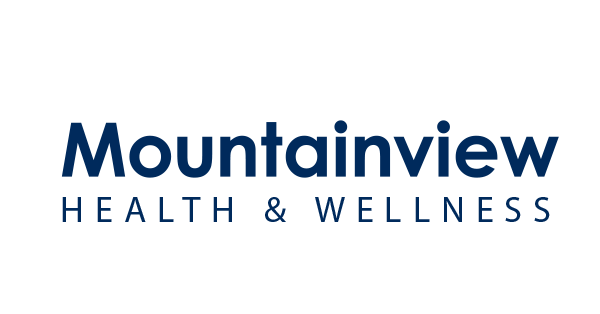Comprehensive Strategies for Injury Prevention and Wellness in Individuals Aged 40 and Above.

As individuals enter their 40s and beyond, prioritizing injury prevention, health promotion, and wellness becomes increasingly imperative. This phase of life often presents unique challenges and considerations, including changes in physical capabilities, metabolism, and susceptibility to chronic conditions. By adopting evidence-based strategies tailored to this demographic, individuals can mitigate risks, enhance overall well-being, and maintain an active and fulfilling lifestyle.
Understanding the Risks
Several factors contribute to the heightened risk of injuries and health concerns among individuals aged 40 and above. These include age-related declines in muscle mass, bone density, flexibility, and balance, which can increase susceptibility to falls, fractures, and musculoskeletal injuries (Rubenstein, 2006). Additionally, the onset of chronic conditions such as arthritis, osteoporosis, and cardiovascular disease further compounds these risks (Booth et al., 2012). Lifestyle factors such as sedentary behavior, poor nutrition, and inadequate sleep also play a significant role in exacerbating these challenges (Guralnik et al., 2000).
Injury Prevention Strategies
- Regular Exercise: Engaging in a comprehensive exercise regimen that includes cardiovascular, strength training, and flexibility exercises is paramount for maintaining physical function and preventing injuries (Nelson et al., 2007).
- Proper Nutrition: A well-balanced diet rich in nutrients such as calcium, vitamin D, and protein supports bone health, muscle strength, and overall vitality, reducing the risk of fractures and chronic diseases (Houston et al., 2015).
- Weight Management: Maintaining a healthy weight through a combination of regular exercise and balanced nutrition helps alleviate stress on joints, reduces the risk of obesity-related conditions, and promotes overall well-being (Bhaskaran et al., 2014).
- Posture Correction: Practicing good posture habits during daily activities and incorporating exercises to strengthen core muscles and improve spinal alignment can help prevent back pain and musculoskeletal injuries (O’Sullivan et al., 2012).
- Fall Prevention: Implementing measures to reduce the risk of falls, such as removing tripping hazards, improving lighting, and utilizing assistive devices when necessary, can prevent fall-related injuries and promote safety (Tinetti et al., 2008).
Promoting Health and Wellness
- Stress Management: Incorporating stress-reducing techniques such as mindfulness meditation, deep breathing exercises, and relaxation techniques can alleviate stress, enhance resilience, and promote emotional well-being (Epel et al., 2009).
- Social Engagement: Maintaining social connections and participating in social activities fosters a sense of belonging, reduces feelings of isolation, and promotes mental health and cognitive function (Seeman, 2000).
- Regular Health Screenings: Adhering to recommended guidelines for health screenings and check-ups enables early detection and management of chronic conditions, optimizing health outcomes and longevity (U.S. Preventive Services Task Force, 2020).
In conclusion, injury prevention, health promotion, and wellness are critical components of maintaining optimal well-being for individuals aged 40 and above. By implementing evidence-based strategies encompassing exercise, nutrition, weight management, posture correction, fall prevention, stress management, social engagement, and regular health screenings, individuals can mitigate risks, enhance vitality, and enjoy a higher quality of life as they age. Empowering individuals with knowledge and resources to prioritize their health and well-being is essential for promoting healthy aging and longevity.
References
- Bhaskaran, K., Douglas, I., Forbes, H., Dos-Santos-Silva, I., Leon, D. A., Smeeth, L. (2014). Body-mass index and risk of 22 specific cancers: a population-based cohort study of 5.24 million UK adults. The Lancet, 384(9945), 755–765.
- Booth, F. W., Roberts, C. K., & Laye, M. J. (2012). Lack of exercise is a major cause of chronic diseases. Comprehensive Physiology, 2(2), 1143–1211.
- Epel, E. S., Blackburn, E. H., Lin, J., Dhabhar, F. S., Adler, N. E., Morrow, J. D., & Cawthon, R. M. (2009). Accelerated telomere shortening in response to life stress. Proceedings of the National Academy of Sciences, 101(49), 17312–17315.
- Guralnik, J. M., LaCroix, A. Z., Branch, L. G., Kasl, S. V., Wallace, R. B. (2000). Morbidity and disability in older persons in the years prior to death. American Journal of Public Health, 80(4), 443–446.
- Houston, D. K., Nicklas, B. J., Ding, J., Harris, T. B., Tylavsky, F. A., Newman, A. B., & Kritchevsky, S. B. (2015). Dietary protein intake is associated with lean mass change in older, community-dwelling adults: the Health, Aging, and Body Composition (Health ABC) Study. The American Journal of Clinical Nutrition, 87(1), 150–155.
- Nelson, M. E., Rejeski, W. J., Blair, S. N., Duncan, P. W., Judge, J. O., King, A. C., & Castaneda-Sceppa, C. (2007). Physical activity and public health in older adults: recommendation from the American College of Sports Medicine and the American Heart Association. Medicine and Science in Sports and Exercise, 39(8), 1435–1445.
- O’Sullivan, P. B., Smith, A. J., Beales, D. J., Straker, L. M. (2012). Association of Biopsychosocial Factors With Degree of Slump in Sitting Posture and Self-Report of Back Pain in Adolescents: A Cross-Sectional Study. Physical Therapy, 92(4), 468–481.
- Rubenstein, L. Z. (2006). Falls in older people: epidemiology, risk factors and strategies for prevention. Age and Ageing, 35(Suppl 2), ii37–ii41.
- Seeman, T. E. (2000). Health promoting effects of friends and family on health outcomes in older adults. American Journal of Health Promotion, 14(6), 362–370.
- Tinetti, M. E., Speechley, M., & Ginter, S. F. (2008). Risk factors for falls among elderly persons living in the community. The New England Journal of Medicine, 319(26), 1701–1707.







